“This is our reward?”: After 4 years fighting ISIS, Syrian Kurds face uncertain future as US pivots to Turkey
Senior Kurdish officials are seeking international support after Trump’s decision to withdraw US troops and back Erdogan’s plan for northern Syria
Jared Szuba traveled to northern Syria at the end of 2018 to report on the situation in Rojava, or “west,” the Kurdish name for majority-Kurdish lands in northern Syria. Kurds have made up the backbone of the Syrian Democratic Forces, Washington’s local partner in the fight against Islamic State in northern Syria. The SDF has borne the brunt of the casualties in the Coalition’s battles against ISIS.
While awaiting permission to enter Syria, U.S. President Donald Trump announced that he was pulling U.S. troops from the country, leaving Washington’s Kurdish allies stranded.
AYN ISSA, northern Syria – Officials from the Democratic Federation of Northern Syria are willing to engage in talks with all parties to prevent an imminent Turkish military incursion into northern Syria as their main partner in the fight against Islamic State, the United States, has yet to offer any diplomatic proposals to resolve the crisis, officials told The Defense Post in a series of interviews.
Members of the Syrian Democratic Council, the political wing of the U.S.-backed Syrian Democratic Forces, are currently engaged in talks with the Syrian regime and with Moscow in the hope of brokering an agreement to deter the attack.
The multi-ethnic SDC created the Democratic Federation of Northern Syria with new administrative arrangements in 2016 in territory captured from ISIS by the SDF. Turkey refuses to recognize the territory on its border and Damascus has so far refused to amend the Syrian constitution to formally recognize its semi-autonomy.
SDC co-chair Riad Darar and SDC Executive Council co-chair Ilham Ahmed returned from talks in Paris last week.
Ahmed told The Defense Post that French officials were receptive to their request for a no-fly zone over northern Syria, but said they needed to consult with the European Union and gain Washington’s permission first.
“We have no other options,” Ahmed said. “If there is a Turkish incursion, they will conduct airstrikes.”
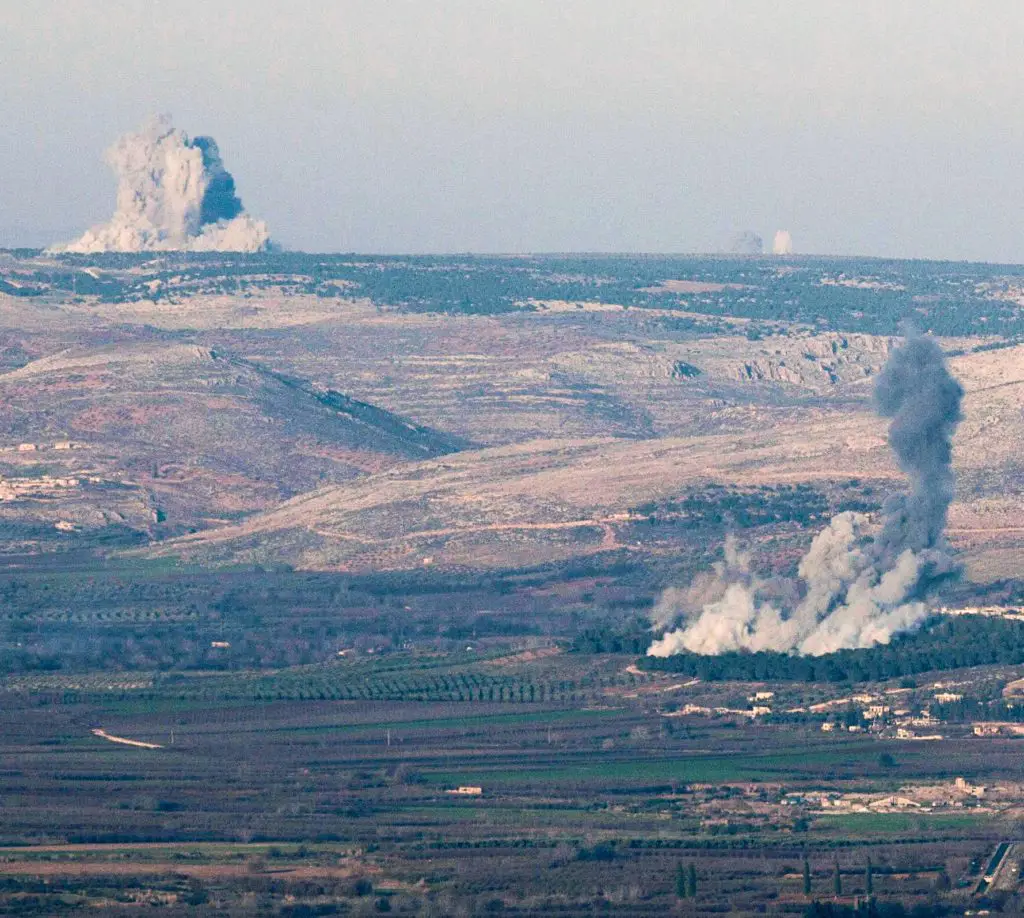
Ankara continues to threaten an imminent military operation to clear northern Syria of fighters from the predominantly Kurdish People’s Protection Units (YPG), which forms the core of the Coalition-backed SDF.
Syrian Democratic officials have been grasping to manage the potentially catastrophic fallout of U.S. President Donald Trump’s acceptance on December 14 of Turkish President Recep Tayyip Erdogan’s request that he withdraw all U.S. forces from Syria.
The decision was reportedly made without the consultation of any senior advisors and led to the resignations of Defense Secretary James Mattis and early departure of the president’s special envoy to the Defeat-ISIS Coalition, Brett McGurk, who had served in the position since the Obama administration.
Officials from the SDC executive committee told The Defense Post that some Coalition officials expressed regret for Trump’s decision, and said they would “try” to find alternative solutions, but made no promises.
As Washington prepared for Christmas break, American officials recommended the SDC try to find a solution in the meantime with the Syrian regime in Damascus, Ahmed told The Defense Post.
The U.S. Defense Department began directly supporting the YPG and its female counterpart, the Women’s Protection Units (YPJ) in 2015 due to its unique capabilities on the battlefield against Islamic State.
The Kurdish forces along with other established northern Syria opposition groups formed the multi-ethnic SDF alliance in October of that year.
At the request of the U.S., the SDF pushed further south into majority-Arab territories in Raqqa and Deir Ezzor provinces to oust Islamic State.
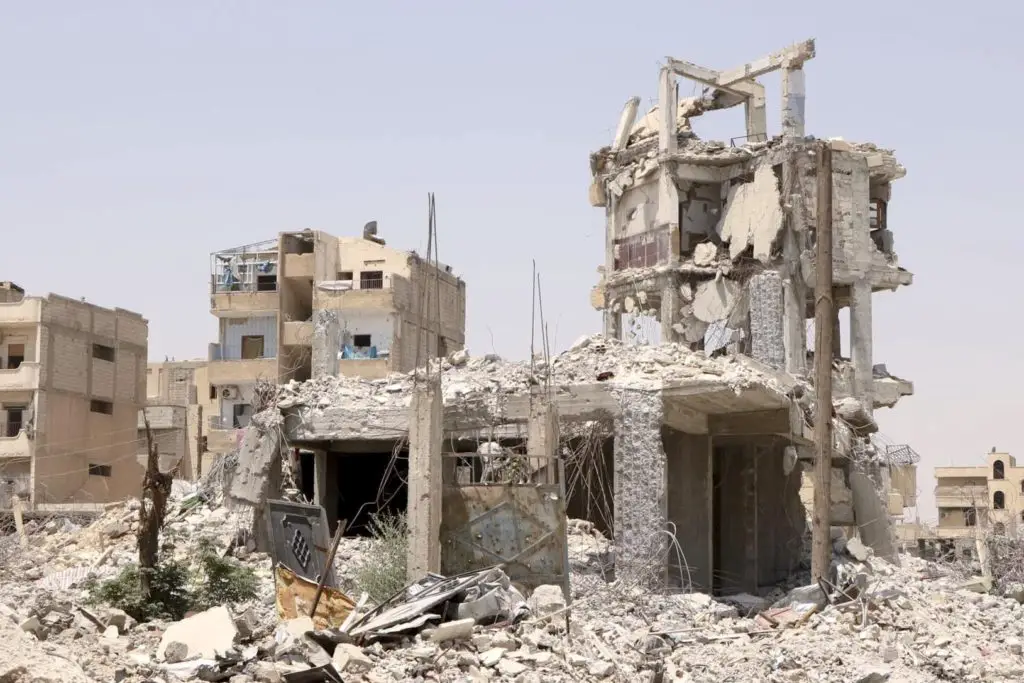
Turkey considers the YPG to be a branch of the outlawed Kurdistan Workers’ Party (PKK), which has waged a decades-long insurgency in Turkey, and is designated as a terror group by Turkey and its Western allies. The YPG is not a designated terror group in the United States or by other Coalition members.
A U.S. military delegation is expected to arrive in Ankara this week to discuss the withdrawal, Turkey’s presidency spokesperson Ibrahim Kalim told reporters last Monday. An American delegation is also expected to visit northern Syria this week, sources close to the SDC told The Defense Post.
Last Sunday, the Wall Street Journal, citing a senior administration official, reported that the U.S. military was “prepared to help Turkey with the logistics of an intervention that could extend hundreds of miles from the Turkish border to the Islamic State strongholds in Syria’s Euphrates River Valley.”
“It’s a very sensible arrangement,” the official told the Wall Street Journal.
The news came as a double blow to Syrian Democratic officials, who say they only learned of Washington’s plan to cooperate with Ankara’s invasion from news reports.
“This is our reward?” Aldar Xelil, co-chair of the Democratic Society Movement (TEV-DEM), said in an interview with The Defense Post on Monday.
Details of the early planning of the upcoming American delegation to Ankara were provided to The Defense Post last week.
For all the anxiety, most people I met say they will fight a Turkish incursion. This 62 year-old man in Kobane today told me he’ll take up arms. ISIS tortured his youngest son over a the father’s political affiliations. Now he has 2 sons and 4 daughters in the SDF. pic.twitter.com/3tRDXZH6YJ
— Jared Szuba (@JM_Szuba) December 28, 2018
The plan, one senior official said during the discussions last Wednesday, was to sit down with Turkish officials and determine exactly what their intentions in northern Syria are, all “bullshit” political rhetoric aside.
The official said Washington will request the operational concept, intent and timeframe of Ankara’s planned invasion of the Syrian territory to be vacated by U.S. forces.
According to the official, the Turkish government has had serious concerns about “getting in over their heads” in northern Syria.
The U.S. intends to leverage those concerns to ensure American interests are protected, “which is a euphemism for, among other things, the PYD and the fight against ISIS,” he said.
The Democratic Union Party, or PYD, is the lead political party in the Syrian Democratic Council and political arm of the YPG.
But Syrian Democratic officials say they have received no such assurances from the United States.
A number of officials interviewed by The Defense Post, including SDC co-chair Amina Omar and Hukmat Habib, a member of the SDC executive council, said they learned of Trump’s decision through the tweet.
“The moment he tweeted, the Pentagon contacted us, asking, ‘Did you hear about this tweet?,’” Xelil told The Defense Post.
Others say they were informed directly by U.S. officials, who expressed their regrets.
Following Trump’s surprise decision, American officials responsible for Syria policy sought to buy time, not only from Ankara, but from their own administration.
One day prior to the White House announcement, senior State and Defense Department officials caught wind of a rumored withdrawal deadline that was less than three weeks away.
After learning that Coalition commander Lieutenant General Paul LaCamera had not yet received any date in writing, State Department officials agreed to coordinate an effort to resist any withdrawal deadline handed down by the White House.
Their work appears to be paying off.
During an informal meeting at a Coalition base in northern Syria last week, a Coalition civil affairs officer told attendees connected to the SDC that although U.S. troops were bound to their orders, the officer had received no deadline for departure.
American troops may remain in Syria as long as three months, Coalition representatives told Syrian Democratic officials, according to Ilham Ahmed and Manbij Military Council spokesperson Shervan Derwish.
On Tuesday the New York Times cited U.S. officials as saying the troops may stay as long as four months.
Based on that news, Ahmed said the SDC intends to maintain its relations with Washington in the hope that the U.S. can find a solution before its troops leave the country. Last Sunday, Trump tweeted that the planned withdrawal was to be “slow and highly coordinated.”
On Monday U.S. Senator Lindsey Graham suggested Trump was ready to “pause” the withdrawal. After meeting Trump at the White House, the senator tweeted that Trump would make sure any withdrawal from Syria was done in a way to ensure “our Kurdish allies are protected.”
President @realDonaldTrump is talking with our commanders and working with our allies to make sure these three objectives are met as we implement the withdrawal. (3/3)
— Lindsey Graham (@LindseyGrahamSC) December 30, 2018
Erdogan announced last Friday his decision to temporarily delay the planned operation pending results “on the ground” of the U.S. withdrawal decision.
On December 25, Turkey’s state Anadolu News Agency cited Foreign Minister Mevlut Cavusoglu as saying that American officials had agreed to complete the Manbij roadmap before the planned U.S. withdrawal.
U.S. State Department officials expressed concern last week that any Turkish incursion into Manbij would put Coalition forces at serious risk, and recommended LaCamera increase patrols and cooperation on the Manbij roadmap to buy time from Ankara.
Any Turkish ground movement into northern Syria or Manbij would trigger a set of circumstances, especially with the SDF, that would make the Coalition’s mission “much more difficult and more dangerous,” a senior U.S. official told CJTF-OIR commander Lieutenant General Paul LaCamera last week.
Ankara has long accused Washington of using the Manbij roadmap as a “tool” for “stalling,” and continues to demand all YPG fighters vacate the area.
U.S. troops remain in the Manbij area and the number of Coalition patrols has increased since the withdrawal announcement and amassing of Turkey-backed rebels to the north, Derwish said.
The absence of a timeline and increased cooperation on Manbij were designed to serve diplomatic objectives as well.
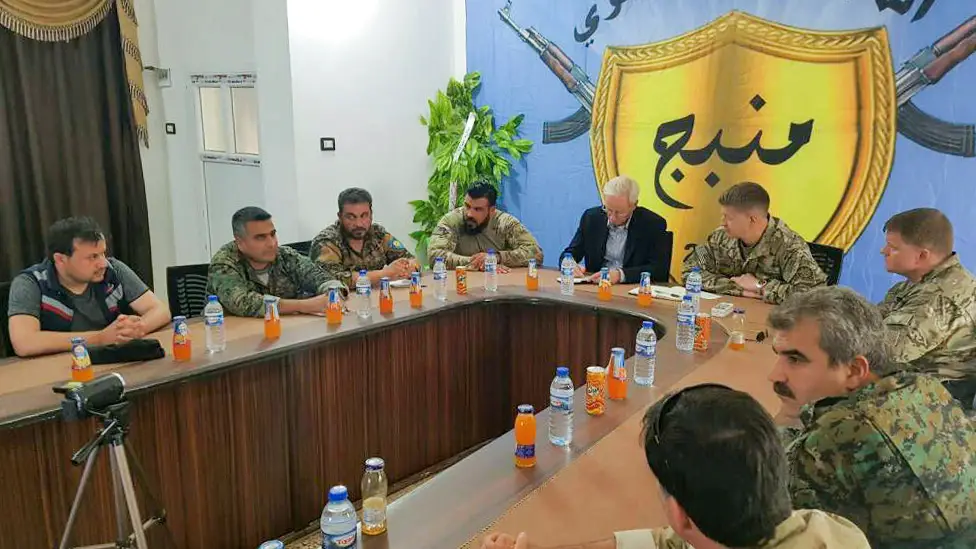
A senior American official informed the ambassador of a Coalition partner nation on the day of the withdrawal announcement was that the long-term plan was to broker a reconciliation deal between the SDC and Ankara after Turkey’s upcoming regional elections set for March 31.
But Syrian Democratic authorities may not have that much time.
Planned attack on Manbij and deals with Damascus
Turkey-backed Syrian rebel groups, including militant Islamist groups, began amassing earlier this week north of the city of Manbij, currently under the control of the SDF-affiliated Manbij Military Council, in preparations for an apparent attack on the city.
SDF and MMC officials insist there are no more YPG fighters in Manbij. “They left the area two years ago,” Derwish told The Defense Post on Wednesday.
The YPG announced on June 5 that it was pulling its remaining advisors from Manbij, a day after the U.S. and Turkey agreed to the roadmap for Manbij. Turkey maintains the YPG has never fully withdrawn from Manbij.
In response to the threat, Syrian Arab Army forces have reportedly amassed west of the city in the town of al-Arima. Moscow re-established the Russian coordination center in al-Arima in response to the buildup.
On Thursday, the YPG released a statement calling on the Syrian government “to assert control over the areas our forces have withdrawn from, in particularly Manbij, and to protect these areas against a Turkish invasion.”
The request surprised some U.S. officials, the New York Times reported on Friday.
In an effort to forestall the attack, the general command of the Syrian Arab Army then falsely announced on state television on Friday that its forces had entered Manbij “and raised the flag of the Syrian Arab Republic in it.”
Downtown Manbij. No regime flag here. pic.twitter.com/Qs8NGwlsgq
— Jared Szuba (@JM_Szuba) December 28, 2018
As of Wednesday, there were no obvious signs of regime forces or Turkey-backed rebel groups in the city, multiple sources told The Defense Post, and American troops have been spotted within the city.
Despite incorrect information about changes to military forces in the city of Manbij, Syria, #CJTFOIR has seen no indication that these claims are true. We call on everyone to respect the integrity of Manbij and the safety of its citizens. #DefeatISIS
— Inherent Resolve (@CJTFOIR) December 28, 2018
But Syrian Democratic officials have been in talks with Damascus about the possibility of deploying SAA troops as a shield to prevent a Turkey-backed attack.
A similar deployment is widely credited with helping to stop a planned Turkish attack on Manbij in 2016 as part of Operation Euphrates Shield.
Sources close to the SDC told The Defense Post that as of Wednesday, no deal had yet been reached, but both sides agree a Turkish incursion into Syrian territory is unacceptable and SAA forces remain outside of the city at al-Arima.
The best option, Manbij Military Council spokesperson Derwish said, was a deployment of SAA forces outside the city to act as a shield. Derwish was unable to say if Russian or Syrian government troops may take the place of American patrols after the U.S. withdrawal.
There are concerns that Russia may hold Damascus back in order to make a deal with Turkey.
Anticipating the US withdrawal
Elsewhere, in Deir Ezzor, forces loyal to the regime and Iran-backed militias have amassed on the west side of the Euphrates river across from SDF and Coalition positions in anticipation of the U.S. withdrawal.
“They want the oilfields,” a Manbij Military Council commander, who gave his name as Mustafa Manbij, told The Defense Post on Thursday after returning from the ISIS front.
Two weeks ago, the commander said, pro-regime forces had deployed a bridge to cross the Euphrates near the city of al-Mayadin, but Coalition planes destroyed it.
“They told us they will defend Deir Ezzor as long as they are there,” he said.
Asked whether the SDC had discussed the status of the oilfields during ongoing negotiations, Ilham Ahmed said only, “No.”
Syrian Democratic officials emphasized to The Defense Post that they are open to working with all parties, but insist the SDF will fight any uninvited incursion into territory under its control.
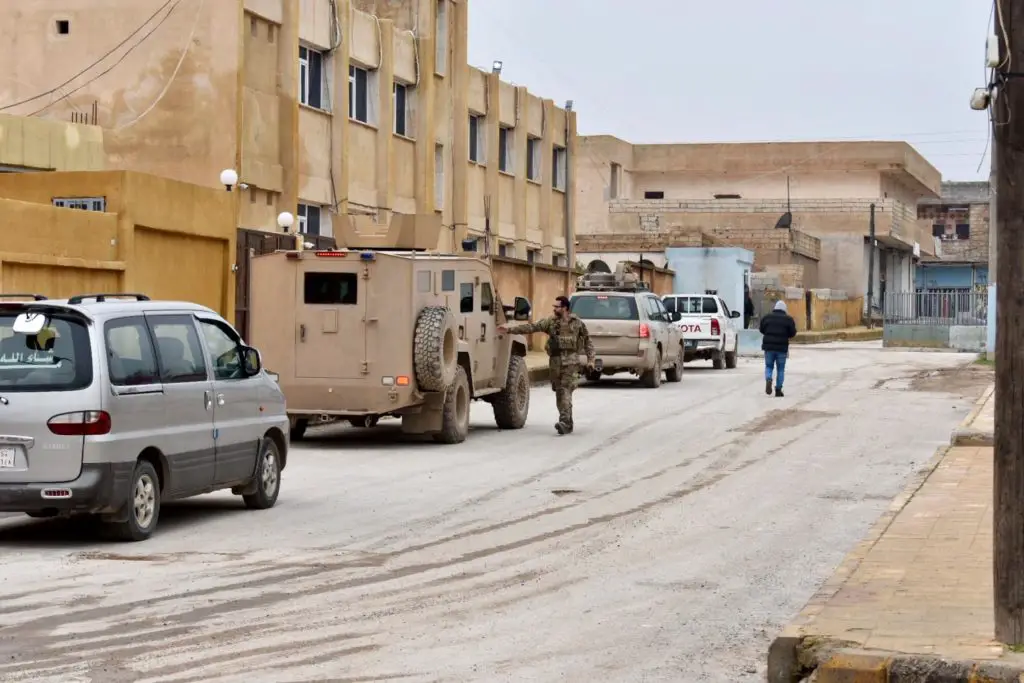
‘Because of our relationship with the Americans … we gained a lot of enemies’
Trump’s decision came as a shock to Syrian Democratic officials. “We always knew the Americans would leave, but not at this time,” Salih Muslim, former co-chair of the PYD whose son died fighting Jabhat al-Nusra in 2013, told The Defense Post on Saturday.
“From the beginning of U.S. presence [in Syria], in every meeting with [Brett] McGurk … they never promised us a political solution or support for a political project,” said Habib. “They said ‘we are working with you only to fight ISIS.’ It is just that the timing of the withdraw that is wrong.”
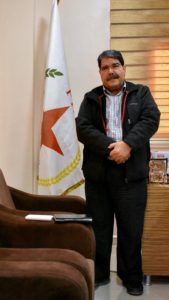
“The Americans told us clearly: ‘We are not with you to fight the Syrian Army. We are with you to fight ISIS. As for your political project, you choose it, and we support you you. No negotiations or discussions, it was just political speech,’” Habib said.
“So that is why we always maintained contacts with the Russians, because they said they will support our project on the ground and help find a solution to this.”
“But until now nothing is official. The Russians are not saying to us they will support a decentralized Syria,” he said.
“We are one of the cards that Trump handed over to Turkey,” he said.
Habib is an Arab, as is Riad Darar and many other members of the SDC, which enforces both gender and ethnic diversity within its leadership.
With the American withdrawal, Damascus now says it has the upper hand, Habib said. Last Tuesday, Bouthaina Shaaban, an advisor to Syrian President Bashar al-Assad, told Syrian newspaper al-Watan that the U.S. was “defeated” and “did not withdraw from Syria, but fled.”
“This is an American problem,” one senior Syrian Democratic official said. “They should help us solve this. We cannot be expected to do this alone.”
SDC officials said they have not been informed of Washington’s intention to help deploy Rojava Peshmerga and forces under Syrian opposition leader Ahmed Jarba to forestall a Turkish attack, and said they were not interested in such a proposal.
Xelil told The Defense Post that he suspects the Rojava Peshmerga have “bad intentions” and that the proposal “doesn’t make sense.”
“These are just rumors now,” he said.
The Rojava Peshmerga, made up mainly of Syrian Kurdish fighters based in northern Iraq, was formed in 2015 as the military wing of the Syrian Kurdish National Council (ENKS), a rival party to the PYD with strong links to Iraqi Kurdistan’s Barzani-led Kurdistan Democratic Party.
Syrian Democratic leadership would consider an offer to deploy Iraqi troops over the border to help finish the fight against ISIS, Xelil said.
According to Xelil, Iraqi military officials contacted Syrian Kurdish political leaders with the proposal, which Baghdad told them had come from Washington.
But Syrian Democratic officials insist their forces can handle the remaining Islamic State fighters east of the Euphrates.
“It’s not a problem if they pull out and leave ISIS,” Xelil said. “The real problem is they told Erdogan they will pull out and hand this territory over to him.”
Rally in Ras al-‘Ayn on Tuesday against the planned Turkish invasion pic.twitter.com/nMzK8hiTPl
— Jared Szuba (@JM_Szuba) December 25, 2018
As fears of ethnic cleansing, and a will to resist it, spread across northern Syria over the last fortnight, Syrian Democratic officials have been on their own to negotiate for a deal with a host of predatory neighbors.
“Because of our relationship with the Americans on the ground, we gained a lot of enemies,” Xelil said.
“There were a lot of parties back then telling us, ‘don’t trust the U.S. One day they will withdraw and leave you alone in the field,” SDF media chief Mustafa Bali told The Defense Post on Wednesday.
“Now those parties have come to us saying, ‘We told you the U.S. would sell you out one day,” Bali said.
“After all that, Trump has destroyed everything,” Xelil said.
“The people of northern Syria have been fighting ISIS for four years. They lost a lot of their sons and daughters,” said Bali. “Not just for America … but on behalf of the entire international community.”
The SDC’s best hope now, officials told The Defense Post on Wednesday, was that talks in Moscow could convince Russia to pressure Damascus to accept a constitutional amendment to formally recognize northern Syria’s semi-autonomous status.
Moscow has told Syrian Democratic officials in the past that they do not necessarily have the power to do that, one official said.

Russia has offered its support for a provincial federal system in the past, but not the one currently administered by the SDC, Habib said.
“They have a vision for federalism that is different from ours. They are very interested in the agriculture and the oil” in the area under SDF control, Habib said.
“We agreed with the regime to discuss this again. They said, ‘We’ll give you autonomous administration, and the Syrian Democratic Forces [will become] national forces,” Habib said.
“But without a constitutional amendment or international guarantees, it is difficult to trust the regime,” he said.
The day of Trump’s tweet, Habib said, representatives from the Carter Center’s Syria peacebuilding team met with SDC officials in Sulaymaniyah (or Slemani) in the Kurdistan Region of Iraq to review “points of strength and weakness in negotiations with the regime.”
The representatives told the SDC they had a strong position in their demand for self-administration, including control of a majority of Syria’s oil reserves and agricultural lands.
“The foremost point we held was the presence of the American forces. They told us that the presence of U.S. forces in this region of Syria will be the card that gets you autonomous administration from the regime.”
Later that day, Trump tweeted that U.S. forces were withdrawing.
Asked whether Washington had offered any diplomatic support since the announcement, Habib said, “No, not at all.”
Manbij Military Council forces in downtown Manbij pic.twitter.com/g2ZX8xscEA
— Jared Szuba (@JM_Szuba) December 28, 2018
‘We have nothing against Turkey’
On Wednesday, the Russian Foreign Ministry announced that Damascus should assume control of the territory currently held by the SDF.
SDC officials unanimously told The Defense Post they will not accept centralized authority.
“Their mindset is stuck in the middle of the last century,” Muslim said. “We have built a model here which I think could be an example for the future of Syria and even for the area.”
But with the threat of Turkish-backed incursion looming, and the memory of mass looting and forced displacement from Efrin, the situation is not so simple.
One source close to the SDC said that if Turkey invades, he must flee the country with his entire extended family. If the regime returns, however, he can flee alone, and his family will be safe staying behind. That, he said, he can accept.
When asked if the SDC would be willing to participate in negotiations with Ankara, all interviewed officials and spokespeople said they would.

“Of course. We have nothing against Turkey,” a member of the SDC executive council member said.
“It could be our best option,” a source close to the SDC told The Defense Post.
The question, they said, is not the SDC’s will, but Ankara’s. “We offered this suggestion to the Americans before,” Ahmed said.
U.S. Special Representative for Syria Engagement James Jeffrey relayed an SDC proposal for negotiations with Ankara to Turkish officials during his last visit in early December, Ahmed told The Defense Post. “But Turkey rejected the offer.”
“Let’s get the negotiations first, then we’ll see,” Xelil said.
“If all these ways won’t work, we have no other options but struggle and resistance,” he said. “And the result will be Trump’s fault.”
Defending northern Syria
Syrian Democratic officials know their forces are spread thin. The SDF believes the ongoing fight against ISIS near the Iraq border could take at least one more month if the current pace of progress continues, according to the MMC commander.
That does not include the work of tracking down sleeper cells, he said.
Without air cover or heavy weapons, an attack by any party, on any front, could rapidly destabilize the situation in the north, U.S. officials feared following Trump’s announcement.
Syrian Democratic representatives unanimously told The Defense Post that the SDF would equally defend all territories and ethnic communities under their administration if attacked.
“The project on the ground is a northern Syrian project,” not a Kurdish one, SDC co-chair Amina Omar said. “We will not turn our back on these areas.”
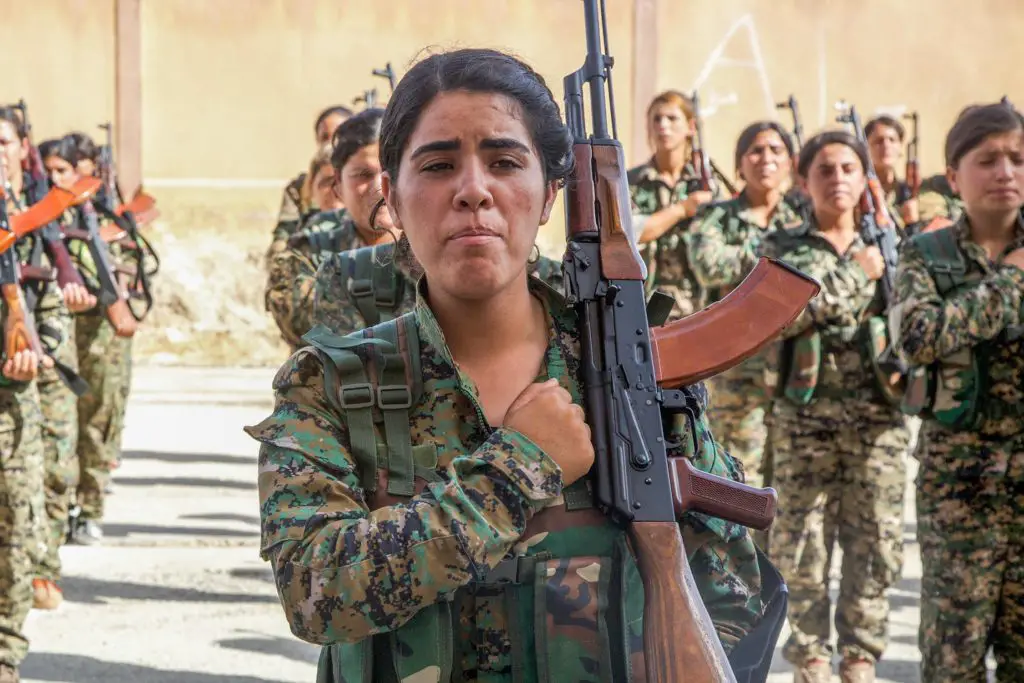
“The people of Deir Ezzor and the other areas, these people fought and died with us. We will never sell them to the regime,” the MMC commander said.
“In the end, we will still be here when the Americans leave,” a member of the SDC executive council told The Defense Post.
“This will be a black mark on American history,” Xelil said.
“What can we tell them?”: US general pressed for reassurance for SDF after Syria withdrawal decision




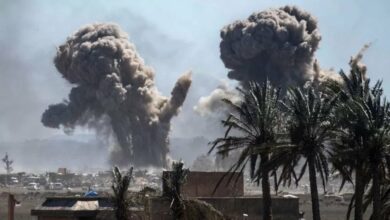

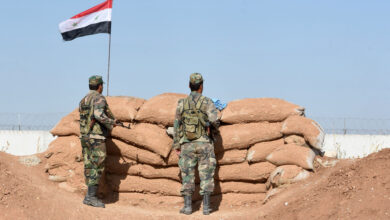
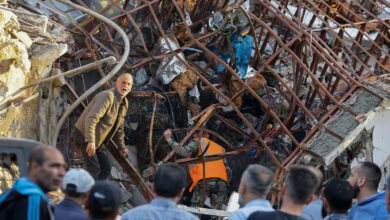
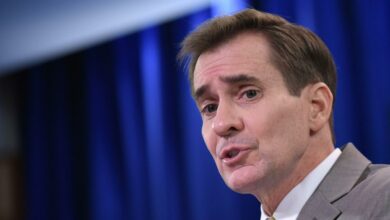
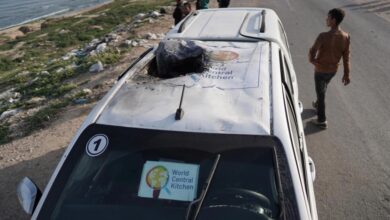
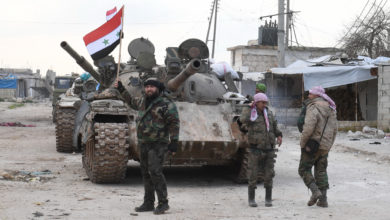
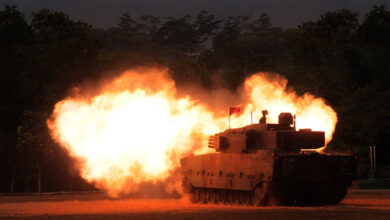
6 Comments